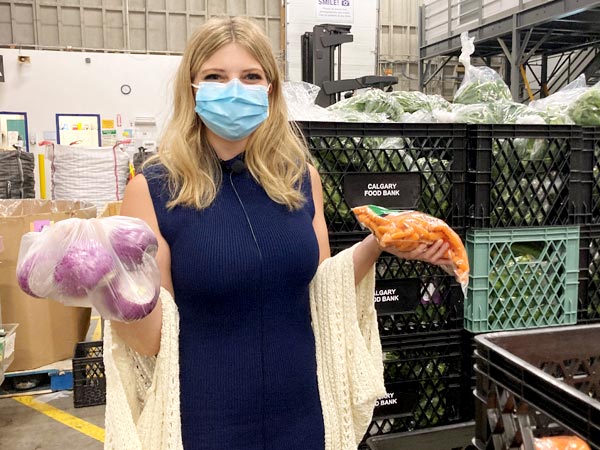A bite of information | The Blog
March is Nutrition Month

MARCH IS NUTRITION MONTH!
To mark this important month, we have invited Mikala Wilson, our resident nutrition expert, to blog for us. Mikala works as a Primary Care Dietitian with Mosaic Primary Care Network. In the spring of 2020, she volunteered in the food distribution area; a few months later, she was asked to help with Food Hamper Nutrition Analysis and continues to work with us to ensure we are providing healthy food to those experiencing food insecurity in our community.
March is Nutrition Month! This year’s theme is “ingredients for a healthier tomorrow”. Dietitians across the country work in the areas of food security, food literacy, food sovereignty, sustainability, nutrition care and prevention to help Canadians feel their best.
I would love to take this time talking about food literacy. Food literacy is not only nutrition knowledge, but also food skills, building confidence in making food choices, increasing awareness of where our food comes from and considering external factors that influence our eating behaviors.
I find that using the nutrition facts label on products can help me make an informed decision and more confident in my food choices. The nutrition facts table can be overwhelming to look at. I always try to focus on one thing at a time. I always start with the fibre content on the label. You may ask, why fibre? Fibre is the non-digestible part of the plant that has so many wonderful benefits to our health. High fibre foods help us to feel fuller for longer, lower cholesterol, control blood sugar, and may help lower our risk for heart disease and some cancers. You’ll find foods made up of whole grains, vegetables, fruits, beans, lentils, and chickpeas to be a higher source of fibre. On a nutrition facts label there is a % daily value (%DV) on the right-hand side. When using the %DV a good rule of thumb is: 5% or less is a little bit of a nutrient, 15% or more is a lot of a nutrient. I like to choose foods that are higher in fibre, so if I am comparing two products, I always try to pick the one with >15%DV fibre.
Another nutrient that I check is sodium. Sodium (or salt) is a mineral that helps maintain our fluid balance. All salt is salt, whether it is celery salt, Himalayan salt, or garlic salt, it all has the same impact on our health. Having excessive amounts of salt could contribute to higher blood pressure, kidney disease and heart disease. I like to try to pick foods that are lower in sodium and using the %DV can be a helpful tool! Try to pick items that have <15% DV for sodium. If you have an item that is higher in salt (ex. Canned peas or canned lentils), try rinsing them, this can decrease the amount of excess salt on these products.
If you’d like to learn more about label reading – visit Health Canada’s free course for label reading: https://www.canada.ca/en/health-canada/services/understanding-food-labels/nutrition-labelling-course.html or Alberta Health Services handout on label reading https://www.albertahealthservices.ca/assets/info/nutrition/if-nfs-label-reading.pdf
